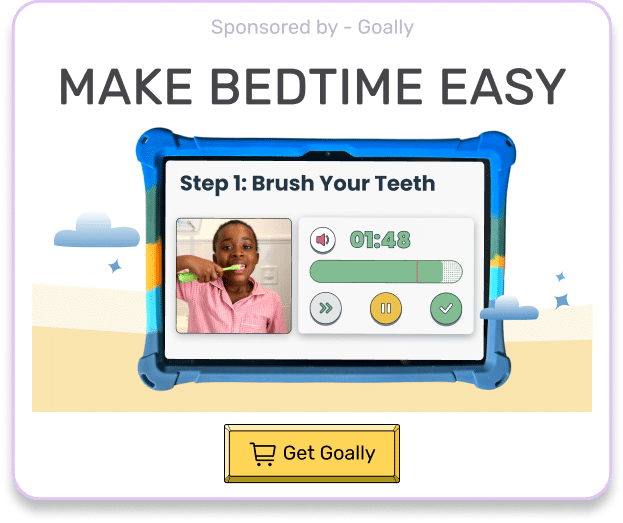The number of children in schools with disabilities has risen from 13% to 15% in the last few years. Access to educational services that support kids with disabilities is essential to ensure kids learn and progress academically. An individualized educational program, or IEP, is a plan that provides extra support for kids with disabilities. But what exactly is an IEP, and how can it benefit your child? Read on to learn about the IEP process and if enrolling your child in one is the right move.
Table of Contents
What Is an IEP?
An IEP is a written document that parents create with school staff members that lays out the services a school will provide for a child with a disability. The document also has pre-determined goals for the child’s learning and specific instructions to achieve the goals. The program benefits kids that require personalized:
- Support
- Schooling
- Services
An IEP provides kids with a uniquely designed education plan to meet their development goals. Those who are eligible for IEPs have coverage from regulations in the Disabilities Education Act, known as IDEA.
SPONSORED BY: Goally
Goally’s Kid’s Tablet has one of the largest libraries of skill-building videos (like “How to Share” and “What To Do When You’re Lost”) in the Goal Mine app.👇
IEP Process: What Qualifies a Child for an IEP?
Some of the main conditions that make a child eligible for an IEP include the following:
- Visual impairment
- Learning disabilities
- Developmental issues
- Autism
- Emotional disorders
- Hearing difficulties
- ADHD
Read more: How to Make an IEP Plan + IEP Examples
All in all, there are 13 conditions or disorders where it’s appropriate to begin the process of attaining an IEP. Kids can have an IEP when they’re three years old. These conditions require special attention to assist kids when developing the following abilities:
- Reading
- Writing
- Speaking
- Listening
- Mathematics

What Is the Difference Between 504 and IEP?
Both 504 programs and IEPs can provide learning assistance for students with special needs and disabilities. Both plans are free of charge and don’t require fees from families. There are, however, some distinct differences between the two. Let’s take a look below.
504 vs. IEPs
IEPs mainly focus on the educational component, tailored to each child’s needs and conditions. 504 programs, on the other hand, focus more on integration between students with disabilities. An IEP offers unique and personalized support that attends to the child’s needs, circumstances, and conditions. A 504 plan makes accommodations for kids to learn in the general education setting.
To begin the IEP process, a child must have a disability that falls under the thirteen categories listed in the law, and the disability must negatively affect their school performance. 504 plans have fewer rules governing them. The disability requirements are less strict for attaining a 504, but the disability must limit a significant life activity. For example, if your child has an allergy, their 504 plan could include measures to ensure they can eat safely with their peers. A 504 plan can also serve your child in college, while an IEP only accommodates kids in grades K-12.
Read more: EHCP Guide for Parents: What You Need to Know

IEP Process Questions
Are you considering registering your child for an IEP? You may have questions about the IEP process and what’s involved. We’re here to clear them up. Once you know the level of assistance, you’ll be able to decide if enrolment is the best option.
What’s Involved in the IEP Process?
With an IEP comes official documentation to advise parents about the students’ learning, challenges, and targets. It involves the following:
- How the kid is currently performing and progressing both educationally and behaviourally
- What services become available for your child specifically, which may include individualized learning and additional education
- When sessions begin, the length of them, and the finishing times
- Yearly goals for the child while recording progress made
- Adaptations to the learning environment
- Participation and performance in assessments provided
- How the child integrates with activities and exercises set by the school
Read more: Makes sense of your kids IEP
How Frequently Is the IEP Process Reviewed?
The IEP team examines the child’s progress every year. There may be more frequent checks depending on circumstances, performance, and development. Another assessment follows three years in. If the child achieves the desired level of progress, no further requirements are necessary.
Read more: Sensory Processing Disorder Is More Than Just One Thing
How Are Changes to the IEP Process Made?
The school must give parents prior written notice of changes to a child’s IEP. Informing the parents is essential when appointments are due and when making assessments of the child. The parents or guardian must consent before the school can make any assessments.
Goally | Apps To Support Child Development
Looking for fun ways to help your child learn life skills? Try Goally! The Goally tablet comes with award-winning learning apps and video classes to help kids develop the skills they need to become independent with FUN & evidence-based practices.

Our apps teach executive function, language, emotional regulation, finger dexterity skills, and more.
As your child develops new skills, you can increase the difficulty level of the tasks in the app to challenge and motivate them even further. This helps your child grow and progress at their own pace, while also keeping them engaged and excited about their development.

Wrapping Up
The IEP process is a crucial tool for supporting children with disabilities in their educational journey. By understanding the differences between IEPs and 504 plans, identifying eligibility criteria, and actively participating in the process, parents can ensure their child receives the personalized support they need to thrive academically. With the help of dedicated professionals and resources like Goally, children with disabilities can overcome challenges and reach their full potential. Remember, the IEP process is a collaborative effort, and your involvement as a parent is essential for your child’s success.
FAQs About the IEP Process
Who is involved in the IEP process? The IEP team usually comprises parents, special education teachers, general education teachers, school psychologists or other specialists, and a school district representative who can commit resources.
How is the IEP process initiated? The IEP process begins with an evaluation to determine if the student has a disability and requires special education services. This is often initiated by parents or teachers.
What is included in an IEP? An IEP includes the student's present levels of academic and functional performance, measurable annual goals, services to be provided, and how progress will be measured.
Can parents influence the IEP process? Absolutely, parents are vital members of the IEP team. They can provide insights about the child's strengths, needs, and goals, and participate in decisions about the child's educational program.
How often is the IEP reviewed? The IEP is reviewed at least once a year. However, parents or teachers can request a review more frequently if necessary to address changes in the child's needs or progress.
This post was originally published on November 28, 2022. It was updated on June 25, 2023.

Goally
We help parents teach their kids life skills, like doing bedtime and morning independently. Backed by science, we incorporate evidence-based practices and expert-informed designs in all of our apps and content.





